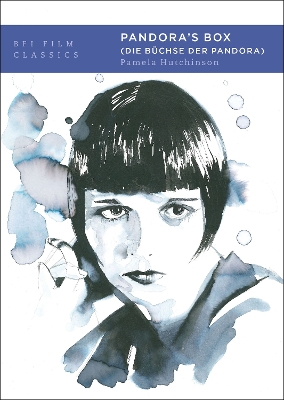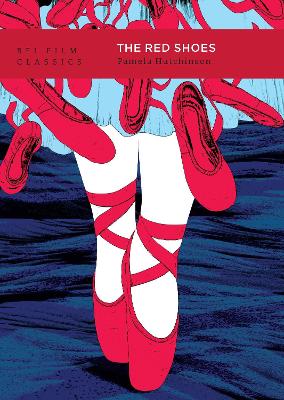BFI Film Classics
3 total works
Die Buchse der Pandora (Pandora's Box, 1929), starring Hollywood icon Louise Brooks, is an established classic of the silent era.Pamela Hutchinson revisits and challenges many assumptions made about the film, its lead character and its star. Putting the film in historical and contemporary contexts, Hutchinson investigates how the film speaks to new audiences.
G.W. Pabst's 1929 silent classic Pandora's Box (Die Buchse der Pandora), stars Hollywood icon Louise Brooks as the enigmatic heroine whose erotic charms lead to disaster for the men drawn into her web. Despite failing commercially upon release, it has evolved into a cult film long after it should have been forgotten. Pandora's Box captivates audiences with its libidinous, violent story, and its mysterious heroine whose motivations, as well as whose guilt or innocence, are difficult to determine. It is a sophisticated adaptation of Frank Wedekind's Lulu plays, and indisputably Louise Brooks' finest performance on film.
In her compelling study, Pamela Hutchinson traces Pandora's production history and the many contexts of its creation and afterlife, revisiting and challenging many assumptions made about the film, its lead character and its star. Analysing the film act by act, she explores the conflicted relationship between Brooks and the director G.W. Pabst, the film's historical contexts in Weimar Berlin, and its changing fortunes since its release.
In her compelling study, Pamela Hutchinson traces Pandora's production history and the many contexts of its creation and afterlife, revisiting and challenging many assumptions made about the film, its lead character and its star. Analysing the film act by act, she explores the conflicted relationship between Brooks and the director G.W. Pabst, the film's historical contexts in Weimar Berlin, and its changing fortunes since its release.
Endlessly fascinating, dark and bright, The Red Shoes (1948) employs every branch of the cinematic arts to sweep the audience off its feet, invigorated by the transcendence of art itself, only to leave them with troubling questions. Representing the climax of Michael Powell and Emeric Pressburger's celebrated run of six exceptional feature films, the film remains a beloved, if unsettling and often divisive, classic.
Pamela Hutchinson's study of the film examines its breathtaking use of Technicolor, music, choreography, editing and art direction at the zenith of Powell and Pressburger’s capacity for ‘composed cinema’. Through a close reading of key scenes, particularly the film's famous extended ballet sequence, she considers the unconventional use of ballet as uncanny spectacle and the feminist implications of the central story of female sacrifice.
Hutchinson goes on to consider the film's lasting and wide-reaching influence, tracing its impact on the film musical genre and horror cinema, with filmmakers such as Joanna Hogg, Sally Potter, Martin Scorsese and Brian De Palma having cited the film as an inspiration.
Pamela Hutchinson's study of the film examines its breathtaking use of Technicolor, music, choreography, editing and art direction at the zenith of Powell and Pressburger’s capacity for ‘composed cinema’. Through a close reading of key scenes, particularly the film's famous extended ballet sequence, she considers the unconventional use of ballet as uncanny spectacle and the feminist implications of the central story of female sacrifice.
Hutchinson goes on to consider the film's lasting and wide-reaching influence, tracing its impact on the film musical genre and horror cinema, with filmmakers such as Joanna Hogg, Sally Potter, Martin Scorsese and Brian De Palma having cited the film as an inspiration.


